- Home
- smallbusiness
- Tech
- This might be the smartest pillow in the world - here's what it's like to use
This might be the smartest pillow in the world - here's what it's like to use
For one, it’s just a comfy pillow.

Then there’s the fact that it plays music.
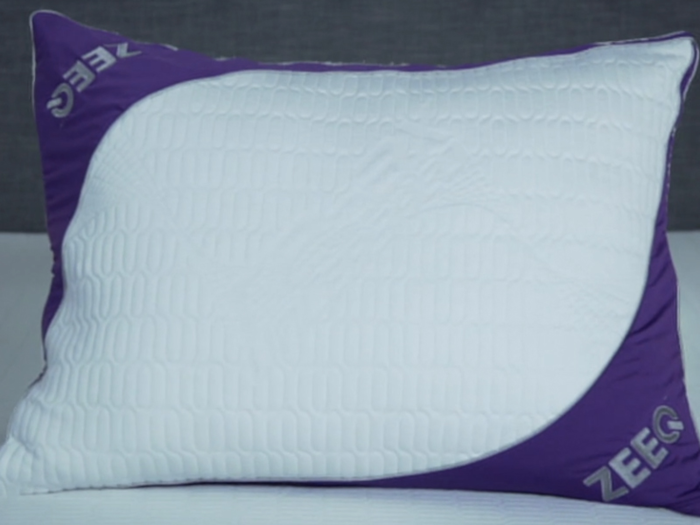
There’s a set of speakers spread out inside the Zeeq, and from there you can pair your phone and stream music over Bluetooth.
The iOS/Android companion app — which lets you set a playlist for drifting off — will only support Spotify Premium and Google Play Music (plus local tracks, and a few REM-Fit made itself) at launch. That’s a pain, but the company says it’ll have a “speaker only” mode at some point in the future that makes it easier to use with any source.
In any case, while this isn’t a new idea, it’s still useful if you’re the kind of person (like yours truly) who needs something playing in the background to pass out. Cranking the volume beyond 75% or so will annoy anyone next to you, but you can still hear things comfortably if you keep it softer.
It also works as a silent alarm.
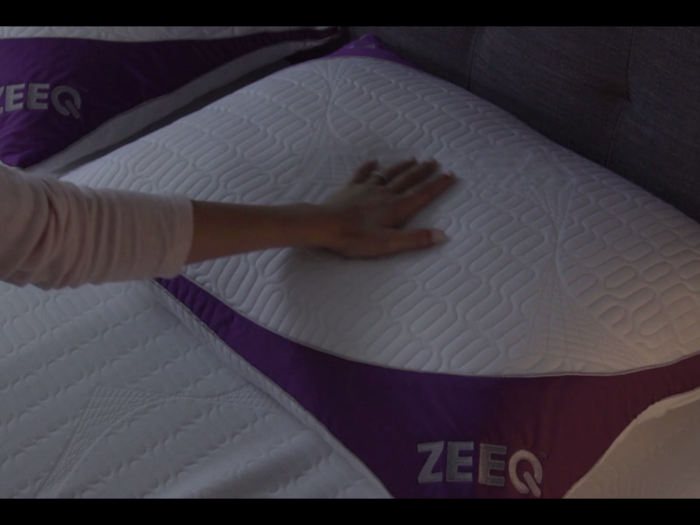
The Zeeq vibrates, so you can set an alarm in the app the way you would anywhere else. There’s also a “Smart Wake” option that’s supposed to wake you at an “optimal” time based on how much you’re moving in your sleep, but I haven’t been able to get that to go off thus far. (Likely because I get up early.)
Being buzzed awake by your pillow is a bit jarring, but for me, it was still gentler than relying on than the alarms that usually pierce through my phone.
As a sleep tracking device, the Zeeq does what it sets out to do...
Remember that this is a prototype, but on its own, the Zeeq is mostly concerned with two things: how much you’re moving, and how much you’re snoring. It has a gyroscope to measure the former, and a set of microphones to detect the latter.
To use those, you have to go into the app to start the sleep tracking. You’re then presented with a handful of questions about your stress level, how well you ate, your caffeine and alcohol intake, and other general things that could affect how well you might sleep on a given night.
REM-Fit says these questions will change over time — as the app and pillow get a better idea of your habits, the idea is to get to the root of what specific things may or may not keep you up.
Then you go to bed. If you snore loudly, the Zeeq is meant to gently vibrate to have you change positions without waking you. (I tend to stay quiet, so I wasn’t able to verify this.)
When you do wake up, you’re shown a set of graphs that give you minute-by-minute feedback for when the pillow sensed movement and noise over the course of the night. You also get a “Sleep Score” — the less you moved and snored, the higher it goes.
For the most part, this works. Certain points where I know I had moved around or made more noise were consistently represented on the chart. If you use the Zeeq as intended, it’ll give you a good enough idea of what happened last night.
...but it raises a few concerns along the way.
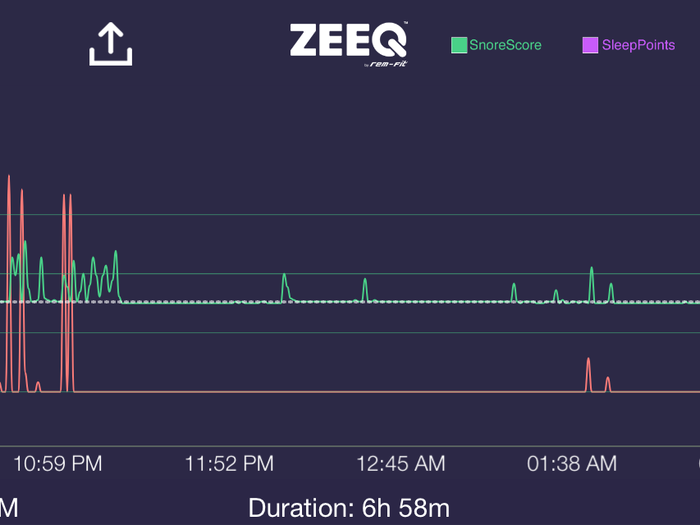
The tracking here is relative to the pillow, so it’s always approximating. What the Zeeq counts as “snoring” could really be any loud, nearby noise. I watched videos on my phone for about a half hour one night — which you really shouldn’t do — and sure enough, that period was filled with decibel spikes the next morning.
Likewise, it’s not going to tell the difference between someone who’s fast asleep, and someone who’s awake but not moving.
Now, the response here is obvious: Don’t start the sleep tracking if you’re not sleeping. And that’s valid.
Two things, though: One, right when I’m falling asleep is pretty low on my list of “times I want to pair a gadget over Bluetooth, then answer questions on my phone.”
And two, the data the pillow measures can't account for everything that goes into a good night's sleep.
For example, it doesn’t seem to take into account how long you sleep — I once received an 87/100 Sleep Score on a night where I slept five and half hours — and sometimes, circumstances can force you to move in the middle of the night. “Getting good sleep” and “being still and quiet” aren’t a one to one thing.
It does work with some wearables, though, and it could gain functionality down the road.
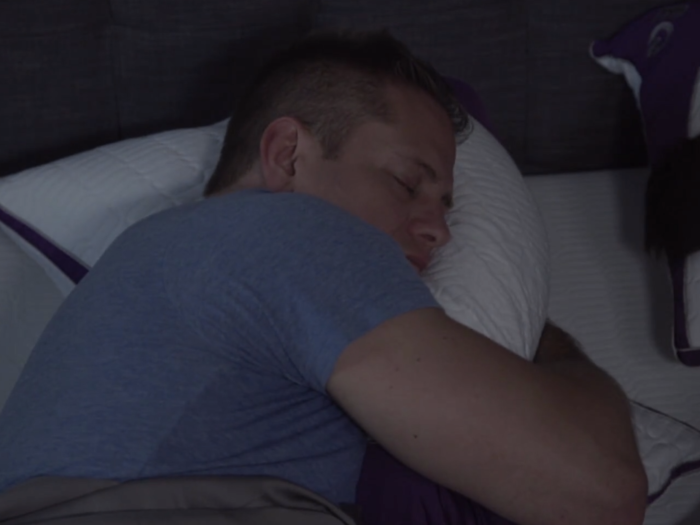
I don’t mean to bash the Zeeq, because its co-creators, Warrick Bell and Miguel Marrero, are aware of what their device can and can't do on its own.
The pillow can pair with wearables, for instance, but only its own for the time being. Bell says he wants to partner with “the MyFitnessPals and Fitbits of the world” at some point, which could add heart rate monitoring to the equation for more people, and make it easier for them to integrate their daily health and fitness data.
The company’s also looking at IFTTT support, which’d make this a much more interesting device for smart homes. Having your pillow turn your thermostat on when you wake up is about as futuristic as tech gets. The Kickstarter campaign is happening, in part, to make these kind of relationships more feasible.
What everything here means is that you should look at the Zeeq as one tool in a larger effort to achieve consistently satisfying sleep. You still have to do the work of living healthier. If you do, then the Zeeq’s assumptions can still be helpful — or at least give you a nice thing to put your face against.
REM-Fit plans to retail the Zeeq for $300, but as of this writing, interested Kickstarter backers can grab one with a $129 pledge.
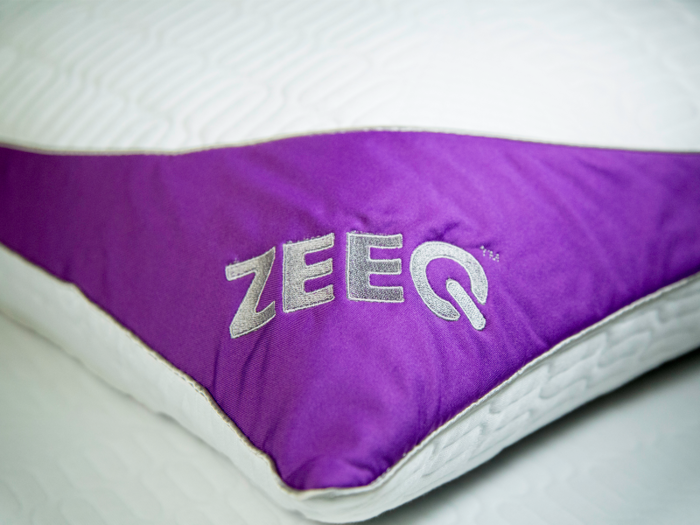
I’ve ignored the elephant in the room up until now, but let’s say hello: Yes, all of this is kind of ridiculous. Buying a Zeeq means charging your pillow — Bell says the battery will last “five to 14 days” based on how much music you stream — and the “secrets” to better sleep were uncovered well before the Internet of Things came around. Plus, $300 isn’t cheap.
Still, while it’s not the first of its kind, the Zeeq has numerous things to like, and it is a pretty convenient way into basic sleep tracking. If it can get the partnerships its creators want, it’ll only be better. And again, this isn’t a totally finished product.
For now, though, just don’t feel like the days of “dumb pillows” are numbered.
Popular Right Now
Popular Keywords
Advertisement